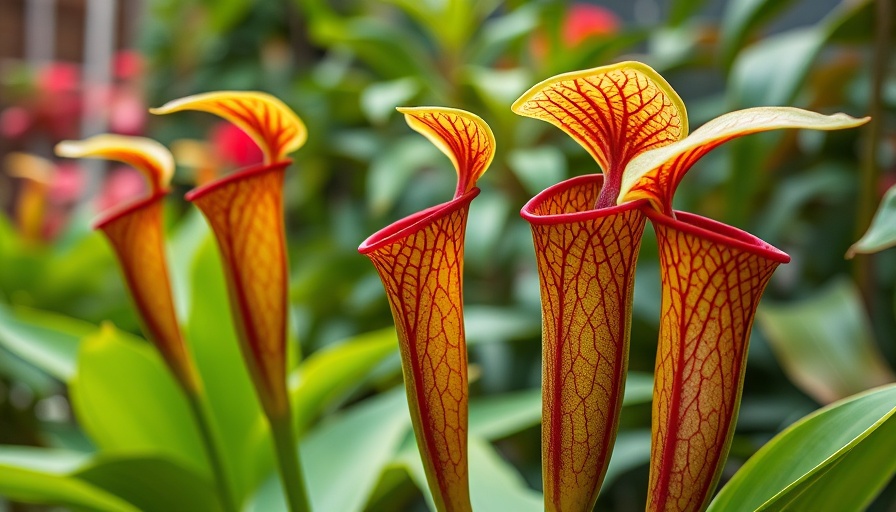
Understanding the Fascinating World of Pitcher Plants
Pitcher plants, known for their unique carnivorous nature, represent one of nature's fascinating adaptations. Found prominently in the Southeastern United States, these remarkable species, particularly from the Sarracenia genus, are more than curious flora; they play a vital role in their ecosystems. Their alluring structure, simulating a pitcher filled with nectar, attracts a variety of insects and even small animals, making them an essential element in the food chain of their native habitats.
Native Habitats: A Closer Look
The various species of pitcher plants thrive in specific environments characterized by moisture and nutrient-poor soils. You can typically find them in bogs and swamps where acidic conditions prevail. These habitats, often overlooked, are crucial for the survival of these plants, allowing them to grow in clumps that can reach upwards of 5 feet in diameter. This adaptability is key to their resilience in nutrient-scarce settings, showcasing their evolutionary importance.
The Mechanisms of Survival
To grasp how pitcher plants sustain themselves, it is essential to explore their intriguing mechanism. The pitcher-like structure acts not just as a trap but as a sophisticated tool for nutrient absorption. Insects, attracted by the bright colors and sweet nectar, venture into the pitcher, where waxy walls and downward-pointing filaments make their escape nearly impossible. This clever evolutionary design helps the plant digest its prey, integrating essential nutrients back into its system.
Pollination and Survival Strategies
One might wonder how these plants manage to pollinate without self-sabotage. Interestingly, pitcher plants have developed a strategy where their vibrant flowers bloom high above the traps, reducing the likelihood of accidentally snagging their pollinators. This adaptation not only aids in reproduction but also supports the plant's survival through seasonal dormancy, allowing seeds to mature and germinate effectively.
The Ecological Benefits of Pitcher Plants
The role of pitcher plants extends beyond mere survival; they contribute significantly to their ecosystems. Not only do they help maintain insect populations, but they also serve educational purposes, captivating both children and adults alike. Their picturesque bloom patterns and intricate designs make them a stunning addition to any garden, promoting environmental sustainability and native species propagation. Furthermore, they support local pollinators, which is increasingly vital as many species face threats from habitat loss and climate changes.
Growing Pitcher Plants: Tips for Success
For those considering cultivating pitcher plants at home, understanding their ecological needs is essential. Providing a habitat that mimics their natural humid and acidic environment can be a rewarding endeavor. With proper care, these fascinating plants can thrive outside of their natural habitat, offering gardeners a unique opportunity to engage with native species while contributing to local biodiversity.
Conclusion: Embrace the Unusual
Pitcher plants exemplify nature's ingenuity with their striking adaptation and contributions to local ecosystems. By understanding these captivating plants, we can better appreciate the delicate balance of our environment and perhaps inspire others to cultivate a love for biodiversity.
 Add Row
Add Row  Add
Add 




Write A Comment